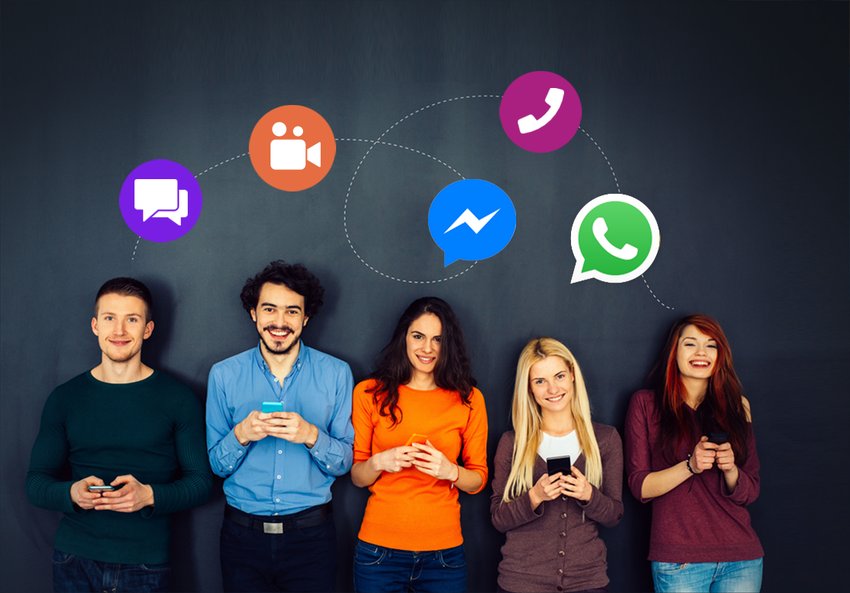Why Mobile Messaging Is Moving from SMS to OTT Chat
SMS has shown itself as a proven technology. But the lower cost and always-on connectivity of OTT is highly desirable, especially in developing markets.

For years, many have been watching the decline in SMS volume and revenue. The latest study by Juniper Research forecasts mobile operator core revenues falling by over 50 billion dollars over the course of the next five years. This fall is chiefly attributed to the further migration of mobile messaging traffic to over-the-top (OTT) messaging such as social media and OTT chat apps like WhatsApp, Facebook Messenger, and WeChat. In fact, conversations on WhatsApp already generate nearly three times as much daily traffic as person-to-person (P2P) SMS, according to TM Forum.
What exactly is driving movement of mobile messaging from SMS to OTT chat? This trend is partially caused by the network effect as individuals follow their social groups to specific chat apps, which Ovum projects will result in OTT messaging being tenfold larger than SMS by 2020, according to TelecomAsia.
OTT Chat Less Expensive Than SMS in Developing Markets
Another factor to widespread uptake of OTT messaging is that it is much less expensive than SMS for consumers—at least in developing markets. While unlimited SMS is standard in monthly mobile plans in most developed telecom markets, such as North America, in many developing markets it is not. In these countries, using an OTT messaging service like WhatsApp or Facebook Messenger may cost significantly less, allowing people to chat at a fraction of the cost of SMS.
Furthermore, in China and India, mobile phone users may have unlimited SMS, but they could be subject to blackout days, as reported by the Indian tech news website Trak.in. These industry-wide blackout days restrict free SMS offered under any plan. Subscribers are charged base rates for SMS sent on these days, and in those cases, users are inclined to send unlimited messages via WhatsApp and other OTT apps, subject only to the limits of their smartphone internet or data packages.
OTT Chat Apps Enable Multiple Users, Value-added Features
Ovum’s Principal Analyst, Pamela Clark-Dickson, notes in TelecomAsia that projections for total mobile OTT messaging traffic (i.e., text, photo, video) will grow to 52.5 trillion messages by 2020, with mobile OTT text traffic alone reaching 47.7 trillion messages—almost 10 times that of SMS, which is forecast to reach 4.9 trillion messages by 2020. Part of this migration from SMS to OTT chat is due to the expanded functionality available with IP messaging apps. For example, many messenger apps offer features such as group chats, the exchange of graphics, video, audio messages, and stickers or emoticons.
The use case for native messaging on mobile phones, however, is not being given up without a fight. While SMS does not support advanced features like multiple users and picture sharing, Google has been busy trying to breathe new life into the Rich Communication Services (RCS) standard since 2017, though it has been dormant more or less since its 2007 introduction as the successor. The RCS would offer more value-added features beyond plaintext.
“RCS allows for sharing images, videos, sound clips, and other types of media and embellishments, including emoji and stickers,” wrote Milen Yanachkov in PhoneArena. “Further, RCS also supports group chats, audio and video calls, location sharing, read receipts, and…other advanced features that we’ve come to expect from IM apps.”
The basic objective of RCS is to create a native messaging user experience on Android phones similar to what iPhones deliver with iMessages, and Google has signed up a number of stakeholders as part of its effort to create what they have branded as Chat. According to The Guardian, Google describes Chat as an open ecosystem and explains that they believe in working with partners—a methodology basically in line with some other messaging technologies also on the market now.
A2P Use Case for SMS, Courtesy of OTT Messaging Apps
While the statistics arguably show an inexorable path downward for SMS, some industry participants are more optimistic about the ubiquitous texting protocol, in part due to OTT messaging applications, according to ITProPortal. Even as OTT message volume has grown greatly at the expense of SMS, consumers must receive application-to-person (A2P) SMS to even begin using OTT chat apps, using a code in an SMS to activate their OTT account. Then, on any subsequent occasion where they must authenticate themselves, they will have to receive a 2FA SMS with another code.
Overall, there is potential for the A2P SMS use case. According to the Juniper Research study, A2P messaging adoption across key verticals including marketing, banking, and healthcare should result in increased revenues from those sectors of more than 8 billion dollars by 2022. Even in industries where A2P is becoming common, there are still many companies that do not use it.
Whatever the future holds for OTT messaging and SMS, it’s unlikely to be an either/or situation. While OTT messaging is less expensive and offers always-on connectivity and media-rich features, SMS has shown itself as the most field-proven of all mobile technologies, with its ability to deliver communications with almost no signal and absolutely no connectivity. Ultimately, there’s no reason to make a choice. SMS and chat applications can now be used together in a fully integrated message workflow.